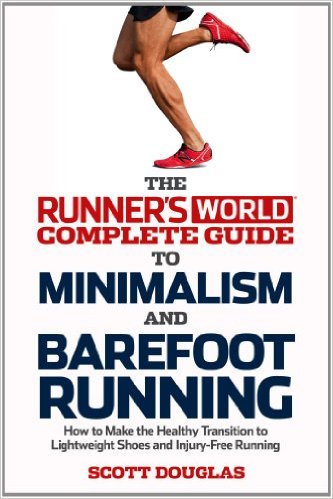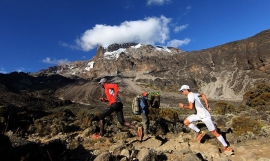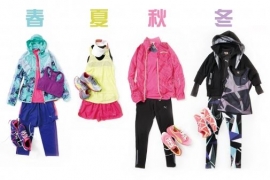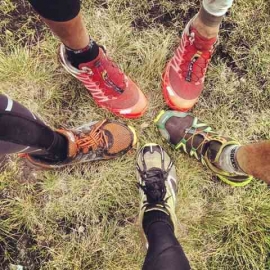Scott Douglas 出版的书籍:
The Little Red Book of Running_Scott Douglas_2011
Advanced Marathoning_Pete Pfitzinger;Scott Douglas_2001|2008
The Complete Idiot's Guide to Jogging and Running_Bill Rodgers;Scott Douglas_1998|2nd-Edition-2003
Bill Rodgers' Lifetime Running Plan_Bill Rodgers;Scott Douglas_1996
更多作者信息:
Scott Douglas-Runner's World 资深内容编辑-跑步作家-人物百科-跑步百科
//www.nduoke.com//www.nduoke.com/renwubaike/scott-douglas
《Runner's World Complete Guide to Minimalism and Barefoot Running》书籍简介:
Learn Why Millions of Runners Have Decided That Less Is More!
No topic in running has gotten more attention lately than minimalist shoes and barefoot running. Proponents say that running barefoot or in lighter, lower shoes leads to better running form and fewer injuries. But others caution that ditching your regular running shoes for barely there models can increase, not decrease, your risk of injury.
In this indispensable guide, veteran running writer Scott Douglas draws on the knowledge of leading coaches and other running experts to show how and why to make the move safely to running in less shoe. Full of real-world wisdom, The Runner's World Complete Guide to Minimalism and Barefoot Running explains why most runners should consider minimalism, gives simple tests to determine if you're ready, shows how to make the transition safely to running in less shoe, and reveals easy exercises to improve your running form once you've switched.
If you've been wondering whether minimalism and barefoot running are for you, let this book be your guide to a lifetime of healthy, happy running.
《Runner's World Complete Guide to Minimalism and Barefoot Running》Review
“Scott Douglas' book on the minimalist running movement is a must for any runner looking to go down that avenue. Scott clearly informs the reader with the reasoning behind running more freely. He also does a great job of breaking it down into step-by-step instructions, allowing your body to adapt to this new style of running.” ―SHALANE FLANAGAN, three-time Olympian, Olympic bronze medalist, and US record holder for 10,000 meters
“What makes Scott Douglas so good is that he doesn't have an agenda to push--besides helping more people run more miles. This is a terrific, fair, and thoughtful book, with everything you need to know about minimalist shoes. Read it and run.” ―NICHOLAS THOMPSON, editor, newyorker.com, and 2:39 marathoner
“Scott Douglas's book is an eminently sensible, practical, and nonfaddish guide to the ‘minimalist' fad in the running world. As a longtime minimalist runner myself, I found a number of valuable tips about the best use to make of these shoes--and, more important, the most useful ways to think about running and fitness as lifelong pursuits. Anyone interested in running will learn from this book.” ―JAMES FALLOWS, national correspondent for The Atlantic and 3:02 marathoner
About the Author
SCOTT DOUGLAS is the editor of Runner's World Newswire and the author or coauthor or five other running books. A runner since 1979, Douglas lives in South Portland, Maine.
《Runner's World Complete Guide to Minimalism and Barefoot Running》亚马逊读者评价:
Scott Douglas' Complete Guide to Minimalism and Barefoot Running took me by surprise. I was prepared to roll my eyes and make lots of annoyed, sighing sounds. Instead, I was captivated from page one. Not only is Douglas a fantastic writer - seriously, reading his book is like riding a bicycle downhill, all thrill and no labor - but he approaches this subject in a comprehensive, multi-pronged, and completely fair way. I've been really annoyed by much of the recent barefoot/minimalist movement. Adherents to the faith think running was reinvented by Christopher McDougall and his book, Born to Run, featuring Mexico's Tarahumara tribe. The truth is that barefoot/minimalist running has been a part of training for as far back as there's been, you know, training. Most of us ran barefoot intervals around the inside of tracks in high school - or across the rolling grass of local golf courses. And, as Douglas points out, most top runners continue to train minimalist into their adult years, doing a huge proportion of their training in racing flats and track shoes (spikes).
Where Douglas goes the extra mile in this book is to take us beyond the simplistic notion that removing your shoes will simultaneously remove any obstacles standing between us and perfect running performances. He coherently explains the need for form work, transitioning strategies, and even cushioned shoes when fatigue levels in the legs and feet demand it. And he explains specific drills and exercises to strengthen your body, paving the way for better running whether barefoot/minimalist or in traditional trainers.
I applaud Scott Douglas' complete guide to minimalism and barefoot running. Moreover, I appreciate the roadmap he outlines to making the transition to running injury free for both the novice and the experienced runner. It was not until recently after a plate, rod and eight pins were placed in my right femur, knee and ankle did I approach the idea behind minimalism and barefoot running. One year after my surgery I started running again, but sharp pain in my knees became a rude awakening for me during my 3-mile runs. I noticed quickly that running was becoming a high impact sport for me to continue after I had been running for almost the past 11 years.
I, like many other enthusiasts, had just finished reading Christopher McDougall and his book, Born to Run. While McDougall was a captivating and entertaining storyteller, his piece however did not readily convince me that minimalism and barefoot running would be a means to an end to running injury free. One afternoon my husband and I were watching our nephew run, and to our observation our two year old nephew and children his age alike naturally run by striking on their midfoot or forefoot. It seemed to be the most natural form to running. A few months later, I came across Scott Douglas' guide to minimalism and barefoot running.
I strongly encourage ALL runners at ANY level to understand and introduce minimalism and barefoot running into their running. Quote from Douglas, "Running in lighter, flatter shoes (or no shoes) isn't an end goal, but a means to an end. That end is a more efficient, more effective gait. Better running should translate to increased performance, decreased risk of injury, and, harder, to quantify but still important, greater enjoyment of running." This is one of the most important echoing theme throughout the book, "It is a means to an end." I have been happily running now in my first ever minimalist shoes for the past 4 months and running injury free! Before transitioning into minimalist shoes, EVERY runner should consider this as a guide and a coach to help make the successful transition into minimalist running.
I think what made this successful for me was listening to my body and incorporating cross training and strength training into my daily workouts. Douglas reiterates the importance of strength training. You will realize quickly there are muscles you are not use to working out, and strengthening these muscles while transitioning into minimalism will help tremendously. Finally, like Douglas highlights in his book, there are different ways to transition. I think the best way for me was to gradually build up to it. Whatever approach you take, I am a believer that it will be successful if you truly understand your goal.
This book spends most of its time talking about injuries and the lack of scientific consensus on the benefits of barefoot running, and very little about the actual process of barefoot running - what the form should look like, what kind of exercises should be done to facilitate the transition, etc. It has some of that, but very little; it's really more of an apologist's take on barefoot running than a guide, written as if to deflect criticism from people against the idea without actually discussing the topic. I wanted to know "how to make the healthy transition to lightweight shoes," because I had already decided I wanted to; this book would be better for someone who has not already made that decision.




